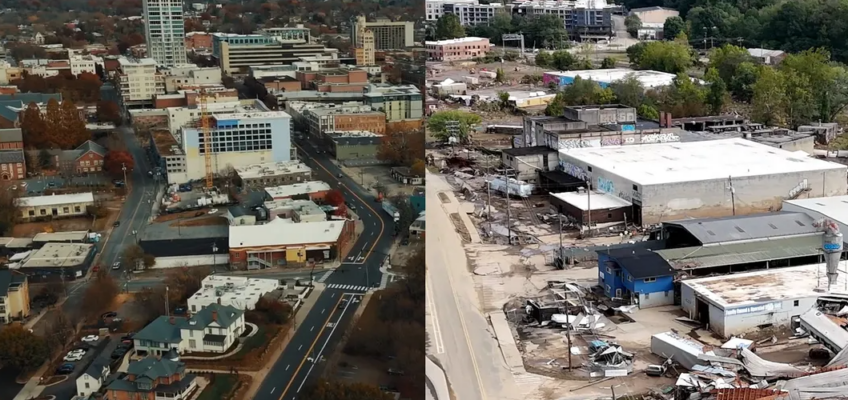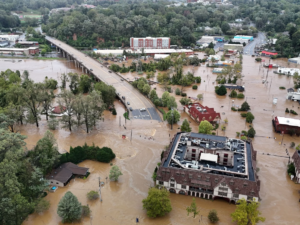
The Immediate Aftermath: Chaos and Clarity
When Hurricane Helene made landfall, it wasn’t the sheer size of the storm that caused the most significant damage to Asheville, but the rapid changes in weather patterns and the unprecedented amount of rain that followed. Flooding, power outages, and downed trees blocked roads and left thousands without electricity. The city’s residents, many of whom had never experienced such devastation, were forced to respond quickly to the immediate needs of their community.
Emergency responders and volunteers quickly mobilized, setting up shelters, delivering supplies, and providing medical aid. The impact of Helene on Asheville’s local economy was also immediate, with major disruptions to tourism, a sector that the city relies on heavily. Hotels were evacuated, businesses shut down temporarily, and key tourist attractions like the Biltmore Estate and the Blue Ridge Parkway experienced significant setbacks.
Despite the initial chaos, Asheville’s citizens, known for their creativity and community-oriented mindset, responded with resilience. A city that prides itself on its arts, local food, and small businesses quickly began to unite in ways that would eventually lead to a collective rebuilding effort.
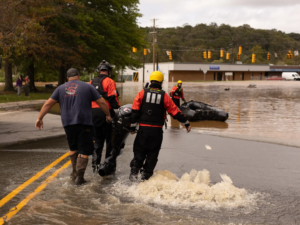
Rebuilding Asheville: The Role of Community
One of the defining aspects of Asheville’s recovery has been the strength of its community. Local grassroots organizations, business owners, and residents took the lead in coordinating relief efforts. Donations poured in from across the country, while Asheville residents self-organized recovery teams, offering everything from cleanup efforts to food distribution.
The Asheville Area Chamber of Commerce, alongside nonprofits like Mountain True and the United Way of Asheville and Buncombe County, became central hubs in the city’s recovery. Their efforts were not just about returning to normalcy, but about envisioning a more resilient, sustainable, and inclusive future for Asheville.
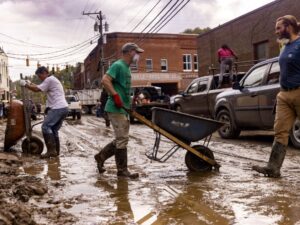
Green Infrastructure and Sustainability: A New Vision for Asheville’s Future
As Asheville began to recover from Helene’s devastation, a larger conversation began to emerge—one about how the city could not only rebuild, but also reshape itself in response to future challenges posed by climate change. Asheville is no stranger to extreme weather events, and the lessons learned from Hurricane Helene have sparked a wave of initiatives focused on sustainability, green infrastructure, and climate resilience.
The city’s urban planning efforts now include flood mitigation strategies, enhanced stormwater management systems, and the expansion of green spaces that can act as buffers in future storms. The creation of green roofs, permeable pavements, and the restoration of wetlands are all part of the city’s broader initiative to better adapt to the climate challenges ahead.
In addition, the rebuilding of Asheville has provided an opportunity to reevaluate the city’s housing policies. With an ongoing housing crisis in many parts of the U.S., Asheville is exploring ways to provide affordable housing for its residents while making sure that new developments are eco-friendly and sustainable.
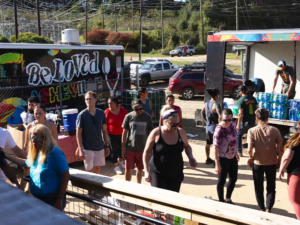
Rebirth of the Arts: A Resilient Cultural Renaissance
Asheville has long been known as a hub for artists, musicians, and creatives. Following the devastation of Hurricane Helene, the city’s cultural sector was hit hard, with galleries, performance spaces, and music venues suffering damage. However, the spirit of the arts community has proven to be one of the most powerful forces in the city’s recovery.
Artists quickly mobilized to support each other and the broader recovery effort. Galleries hosted fundraising exhibitions, while musicians performed benefit concerts to raise money for relief funds. The local art scene, which had always been a symbol of Asheville’s uniqueness, became a beacon of hope and resilience in the aftermath of the storm.
In the years following, Asheville has seen a cultural renaissance. Public art installations began to flourish again, transforming the city’s streets into vibrant expressions of creativity. Local theaters, like the Asheville Community Theatre, were restored and upgraded, offering a safe space for the community to come together and heal.
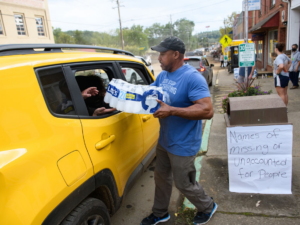
Supporting Local Businesses: Rebuilding from the Ground Up
One of the most challenging aspects of Asheville’s recovery was the economic impact on small businesses. Many local cafes, restaurants, and shops were forced to close temporarily, while others faced extensive damage. However, the city’s commitment to supporting its local businesses has been pivotal in the recovery process.
Programs like “Asheville Strong,” launched by the Asheville Area Chamber of Commerce, have provided grants, marketing support, and low-interest loans to help small businesses get back on their feet. In addition, local entrepreneurs have found creative ways to keep their businesses alive through pop-up shops, online sales, and collaboration with other businesses.
One inspiring example is the way Asheville’s craft breweries rallied together. Many had to close their doors due to power outages and water damage, but they quickly found ways to reopen, even partnering to provide free drinks for first responders and volunteers. Today, Asheville’s brewery scene is not only recovering but thriving, with many new craft breweries opening their doors as the city embraces a renewed sense of community and entrepreneurship.
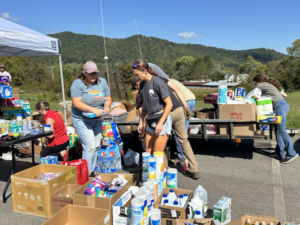
A Bright Future for Asheville
As the physical scars of Hurricane Helene begin to fade, Asheville is emerging stronger and more vibrant than ever. The rebuilding process has brought with it a deeper sense of community, a renewed focus on sustainability, and an expanded appreciation for the city’s cultural and economic diversity.
While the storm brought unprecedented challenges, it also created an opportunity for Asheville to rethink what it means to be a resilient city. From stronger infrastructure to better support for the arts and local businesses, Asheville is not just rebuilding—it’s reinventing itself, with a future that is brighter, greener, and more inclusive than ever before.
In the face of natural disasters, communities are tested, but it is through the rebuilding process that their true strength shines. Asheville’s journey post-Helene is a testament to the power of collaboration, creativity, and a shared commitment to building a better tomorrow.


